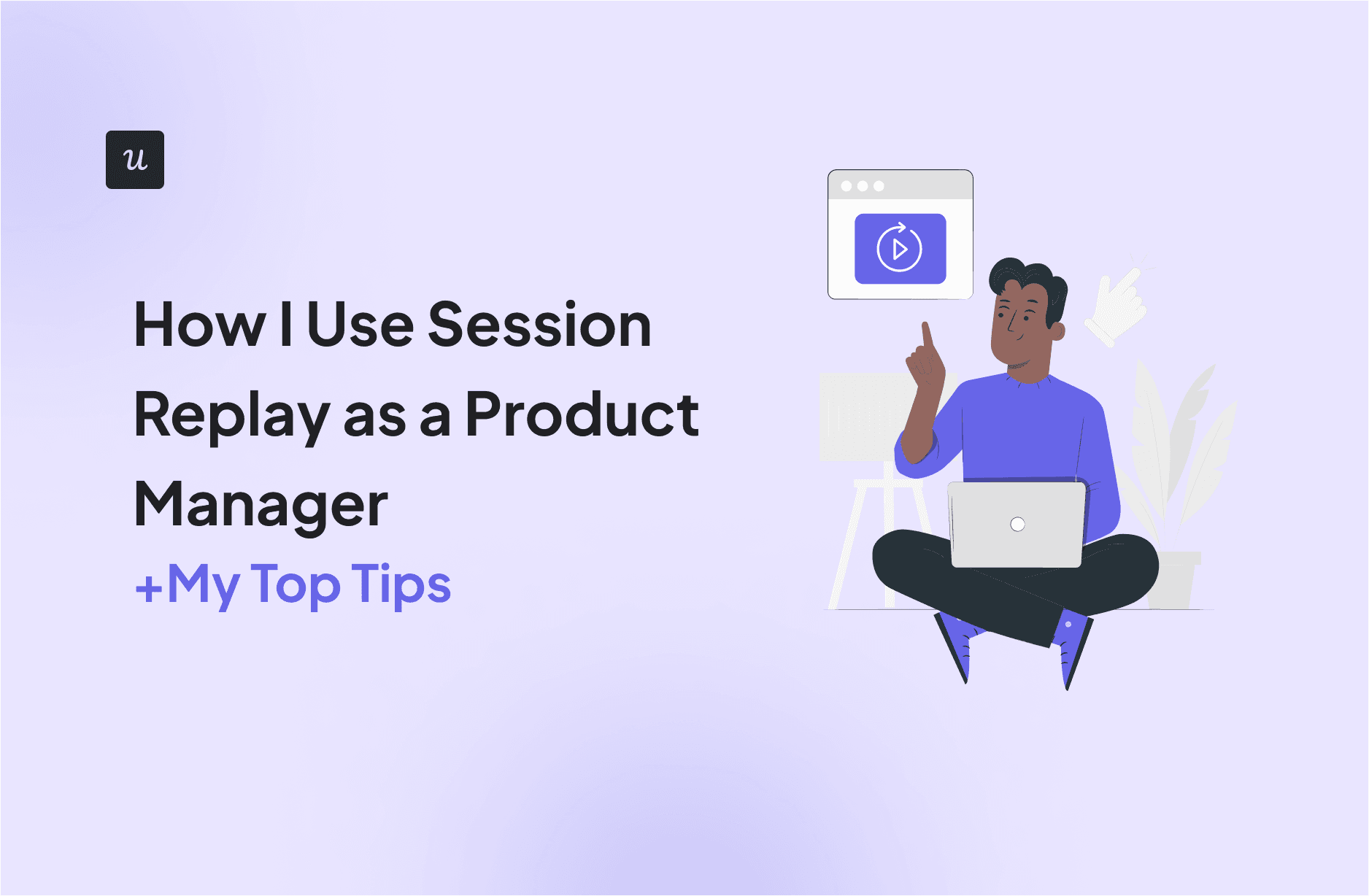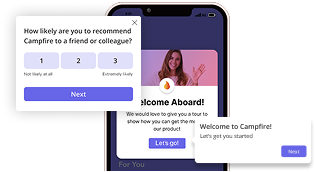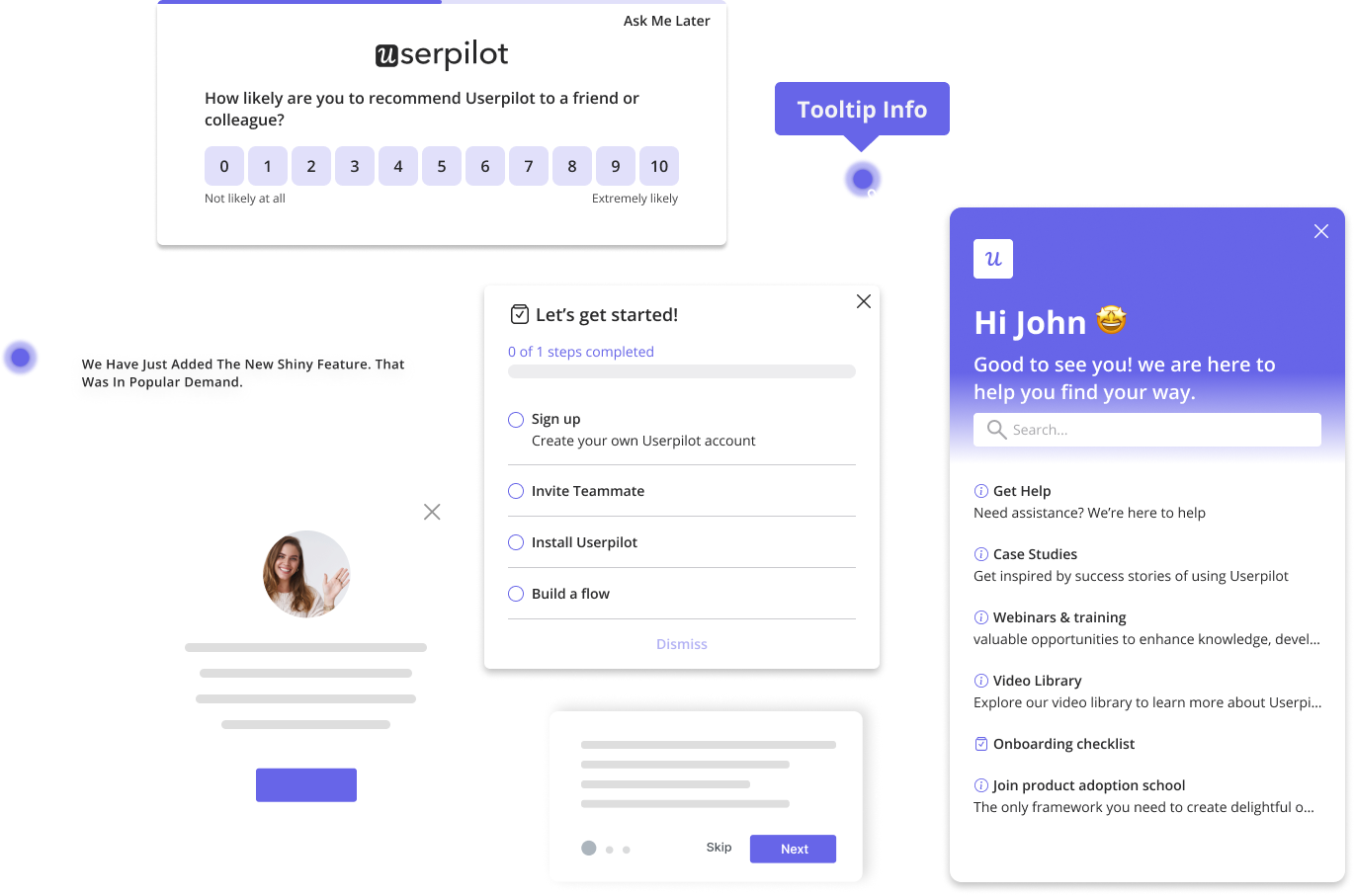
Data is great, but it doesn’t tell you everything you need to know. As a product manager, you need to go beyond numbers and dig into how users are actually moving around in your product. That’s why session replays are an irreplaceable part of my toolkit.
Over the years, I’ve used session replays to catch friction points, troubleshoot bugs, refine onboarding flows, and much more. They’ve helped me discover issues that would’ve been impossible to spot with analytics alone.
But they need to be used wisely, or they quickly go from being a helpful tool to a tedious task. In this post, I’ll walk you through my process, and share my best tips for making the most of session replays without getting lost in endless recordings.
Try Userpilot Now
See Why 1,000+ Teams Choose Userpilot

How I effectively use session replays to improve product decisions
Like any tool, I find that session replays work best with a clear strategy. So here’s how I make sure every session I review brings meaningful insights instead of just adding noise.
Diagnosing friction and drop-offs in the customer journey
Session replays are my go-to whenever something feels off in the user journey. If conversions drop or users struggle with a feature, I don’t just rely on metrics alone – I watch what’s happening.
For example, I once saw users abandoning the sign-up process at the account creation step. Funnel data told me where they dropped off, but it didn’t explain why.
Watching session replays, I noticed users hesitating, clicking around, and then leaving. So what was the issue? The required fields weren’t marked mandatory, and without them, the “Continue” button stayed disabled. Users had no clue what they were missing.

The fix was surprisingly simple: just add simple red asterisks next to the required fields. That one change immediately reduced drop-offs and got more users through the sign-up flow.

Session replays help spot these hidden roadblocks that are impossible to find with just numbers. If users rage-click, hover too long, or suddenly exit, there’s a reason. Watching what they do, instead of just guessing, makes it easier to find what needs fixing and act fast.
Monitoring user engagement with newly released features
When I launch a new feature, I always check if users are interacting with it the way expected. With session replays, this is easy because they show me every detail of user interactions.
Instead of just assuming users will be following the intended flow, I watch how they navigate it. Are they engaging with the feature smoothly, or do they hesitate? Do they miss key actions? Are they clicking in places they shouldn’t?
If I spot recurring friction (like users pausing too long, backtracking, or rage-clicking) that’s a sign that something needs improvement. Sometimes, the fix is a small UX adjustment. Other times, it’s adding an in-app message to guide them.
Troubleshooting bugs and errors in the product
When something breaks, I don’t rely solely on error reports or user complaints to locate what’s wrong. I pair them with session replays so I can see firsthand exactly what led to the problem.
If users keep dropping off at a specific step, I check their sessions to spot the issue. Sometimes, it’s a button that won’t respond. Other times, an error message appears but doesn’t explain what went wrong.
Instead of making engineers recreate the bug from scratch, I flag the session and leave notes directly in Userpilot. This way, they can see the problem in action and fix it faster, without unnecessary back-and-forth.

Session replays take the guesswork out of debugging. Instead of waiting for patterns to emerge, we can catch and solve issues early before they end up frustrating more users.
Compare the behavior of different user segments
We know that not all users interact with the product in the same way. A first-time user might struggle to complete basic actions, while a long-time user might run into issues when a workflow changes. That’s why I don’t look at session replays in bulk, but rather filter them by user type.
Watching sessions separately helps me see patterns faster: Are new users skipping key steps? Are power users getting stuck where we least expect? Are certain workflows smoother for one group but not for another?
These insights help my team and me tailor product experiences. If we watch new users struggling with using the product, we adjust onboarding. If we see that returning users keep running into friction, we focus on refining the flow.
My best tips for making the most out of session replays
Without a plan, session replays can be a huge time sink and leave you buried in data. That’s why, over the years, I’ve learned to refine my approach so I can make session replays more actionable and less overwhelming.
Here are the three tips I learned from trial and error:
1. Use session replays with other analytics features for a holistic overview
Here’s the thing: I never start with session replays. They’re great for context, but only when I already know where to look.
I always start with analytics: funnels tell me where users are dropping off, while surveys tell me where they feel confused. But of course, neither explains why, which is where session replays come in. If data shows me that users are abandoning a key step, instead of guessing at the reasons, I immediately go to watch what’s happening.
This process becomes seamless with an all-in-one solution like Userpilot. With Userpilot’s funnel analysis, I can quickly identify how many users are dropping off at each stage of the customer journey. By clicking on the dropped-off users bar, I can see exactly who abandoned the journey and from there, easily watch their session replays to understand their experience.

2. Don’t go overboard with viewing user sessions
Session replays can easily turn into an overwhelming time sink if not used strategically. Watching random sessions without a plan is not only inefficient but also overbearing.
Like I said, I only dive into replays when the data tells me something is off. If I see a drop in conversions or a spike in error reports, I filter sessions to find the most relevant ones. The same goes for new feature releases: I check a handful of sessions to see if users are interacting with it as expected.

By filtering by user segment, behavior, or specific drop-off points, I can cut through the noise. I also save key sessions and group them into playlists, so my team can quickly review patterns without sorting through endless replays.
3. Avoid making big changes based on outliers
Not every unusual session is a sign of a problem. One user struggling doesn’t mean the product is broken. It could be a slow connection, a one-off mistake, or just random clicking around. If I made changes based on every odd session I saw, I’d be wasting time fixing things that weren’t actually issues.
Instead, I look for patterns. If multiple users hesitate on the same step, get stuck on a button, or drop off at a particular point, that’s when I dig deeper. One frustrated user is an outlier. Ten frustrated users? That’s a sign something needs improvement.
Session replay is a powerful tool, but only when used with the right mindset. The goal isn’t to react to every strange behavior, but to spot real friction that affects a meaningful number of users.
My go-to tool for session replay analysis
The secret to session replays is that they’re only as successful as the tool you use. A good session replay tool should be intuitive, work alongside other analytics, and help you find those useful nuggets of insights you seek. Without that, they become just another pile of data with no clear action.
Personally, I use Userpilot’s session replay because it helps me focus on what actually matters. With Userpilot, I can:
- Filter sessions by user type and behavior: So that I’m not wasting time on random replays and focusing only on the most relevant user behaviors.
- Pair session replays with other analytics reports: So I can see both the numbers and the reasons behind them.
- Tag and share key sessions with my team: So we can streamline debugging and make UX improvements happen faster.
If you’re a product manager looking to make better product decisions, I highly recommend trying it out. You can book a demo with Userpilot here and see how it fits into your workflow!






